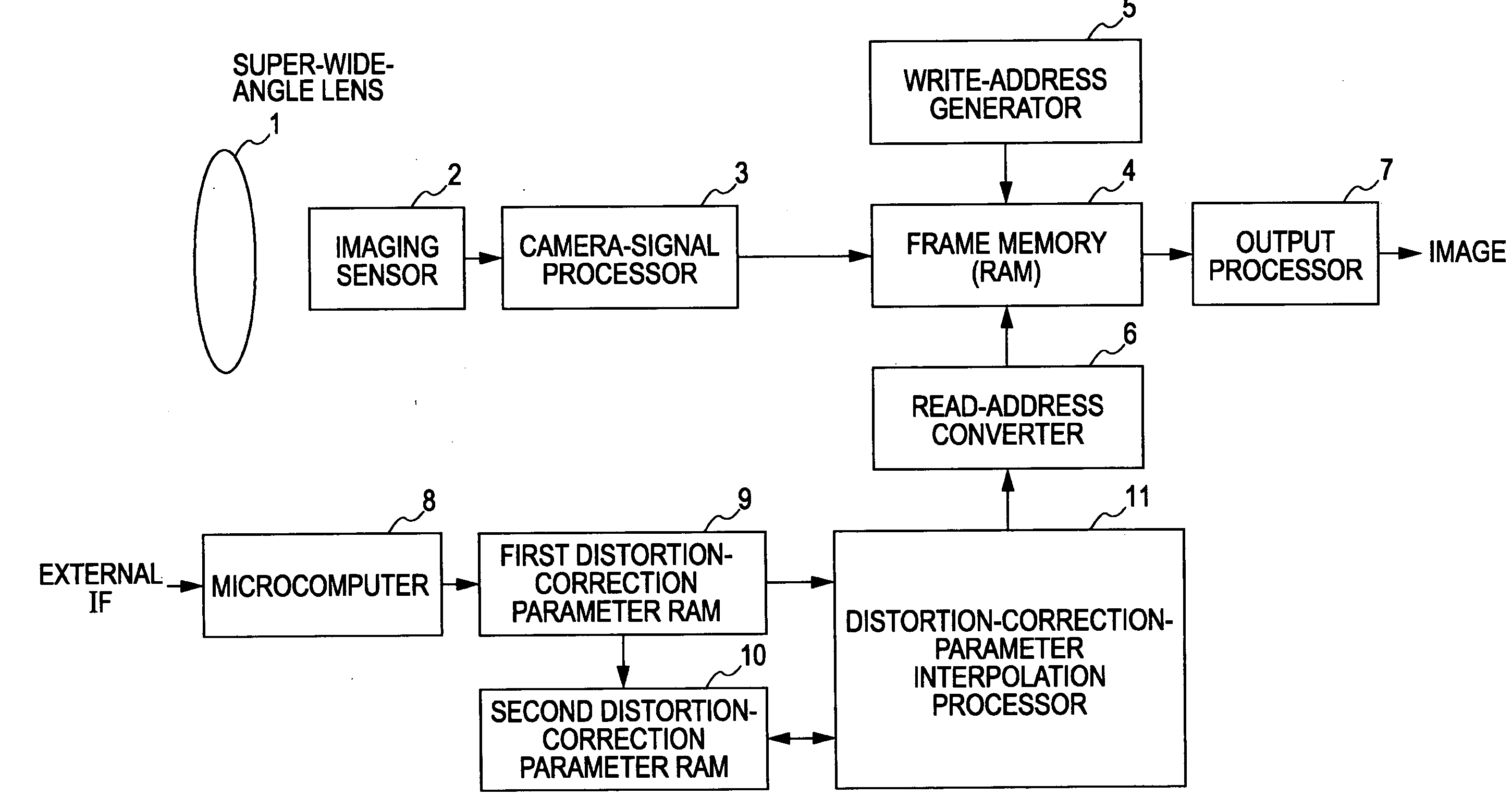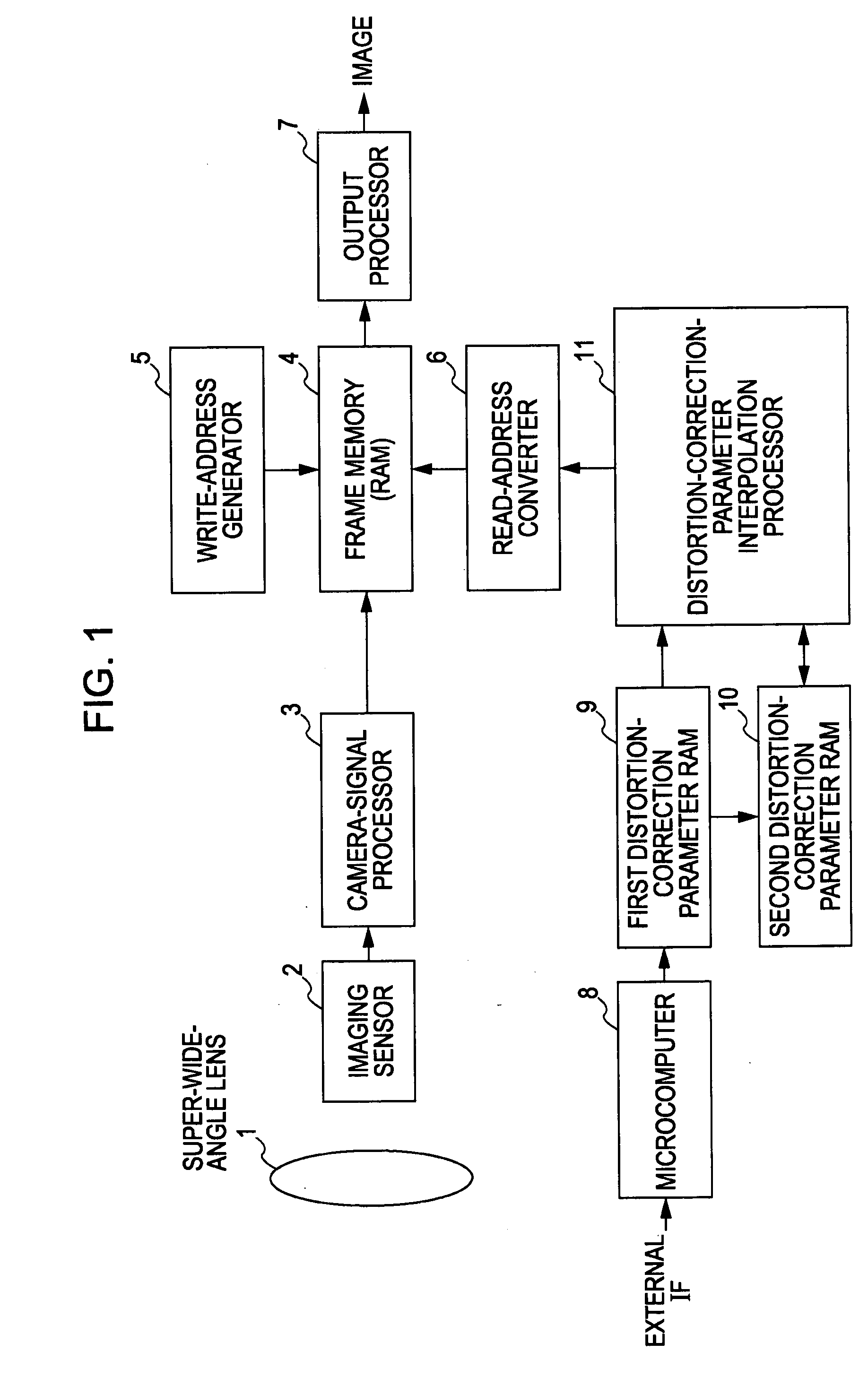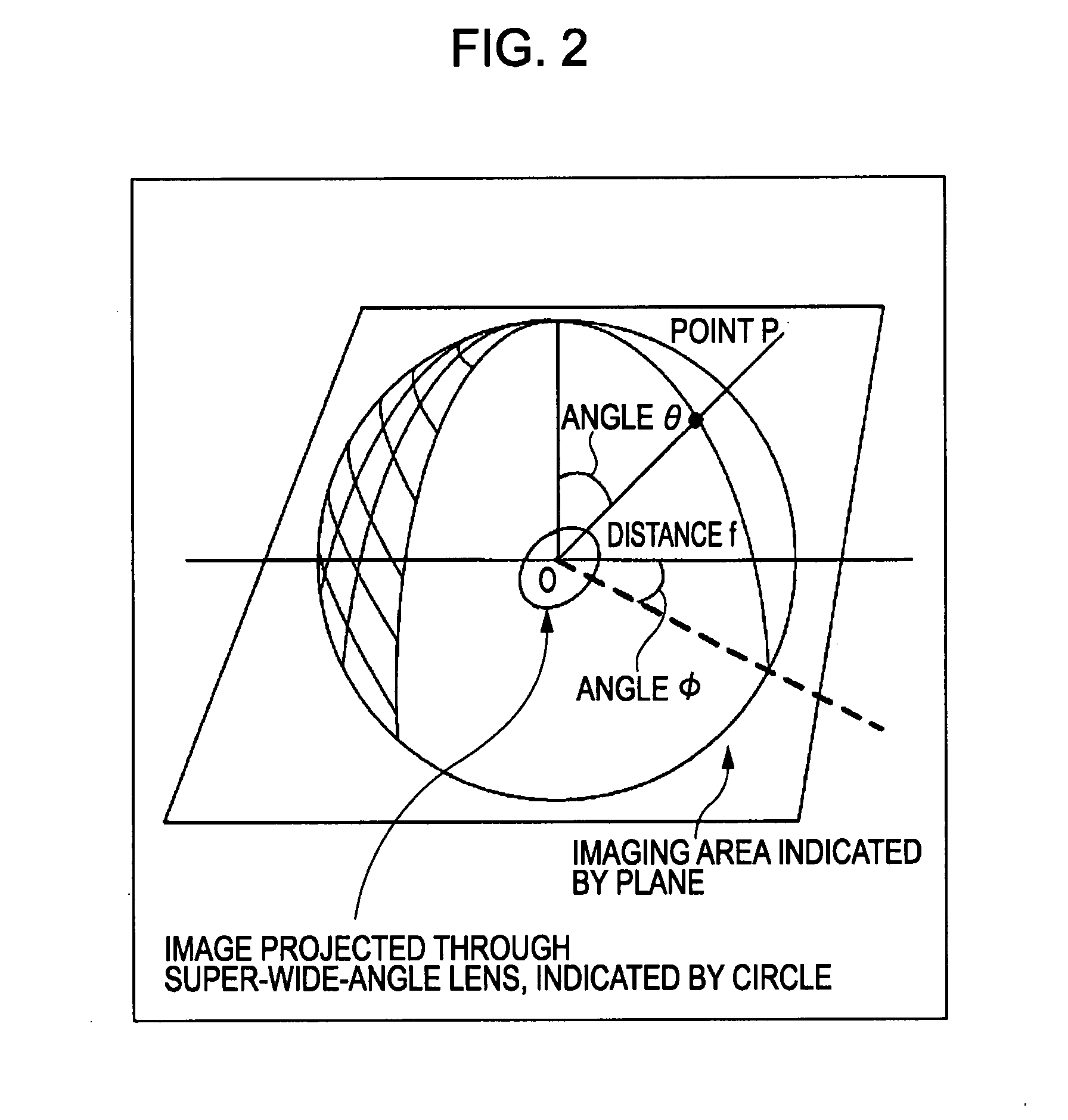[0009]In this case, when the cutout portions have large intervals therebetween, images are discontinuously shown on a display at a time of panning, tilting, zooming, or rotating. On the other hand, when the cutout portions have small intervals therebetween, images are comparatively successively shown on a display at a time of panning, tilting, zooming, or rotating. However, since the display of successive images should have many distortion correction parameters to be stored in a storage device, the capacity of the storage device should be increased, resulting in an increase in
system cost.
[0010]To address these drawbacks, if a host computer generates the distortion correction parameters by performing calculation
processing as needed instead of storing the distortion correction parameters in the storage device in advance, an increase in the capacity of the storage device is not necessary, resulting in smooth display of the images at the time of panning, tilting, zooming or rotating. However, if the host computer takes an excessive amount of time for calculation of the distortion correction parameters, the images are discontinuously shown on a display. Accordingly, an expensive host computer with high performance is necessary for reducing the calculation time. However, this leads to an increase in system cost.
[0012]Accordingly, it is desirable to provide a camera device in which the direction of a lens thereof is fixed and which is capable of smoothly displaying an image at the time of panning, tilting, zooming, or rotating and to provide a monitoring system utilizing the camera device without increasing the cost of the camera device or the system.
[0016]Since a camera device performs distortion correction for an image captured by the super-wide-angle lens, for example, the host computer to which the camera device is connected through a line, for example, merely have standard performance. A controller of the camera device merely indicates distortion correction parameters for a source image and distortion correction parameters for a final image to be obtained. Inexpensive distortion-correction-parameter interpolation means generates other necessary distortion correction parameters to perform distortion correction on an image. Accordingly, the cost of the monitoring system is not increased and smooth display of the image is achieved at the time of panning, tilting, zooming or rotating.
[0017]Furthermore, since the total number of pixels receiving light of the imaging element is larger, for example five to six times larger, than the total number of pixels of an image which is output from the camera device and to which the distortion correction has been applied, deterioration of an image after the distortion correction can be suppressed and the image having excellent quality can be obtained.
[0018]According to the embodiment of the present invention, since a camera device performs distortion correction for an image captured by the super-wide-angle lens, the host computer to which the camera device is connected through a line, for example, merely have standard performance. Accordingly, use of such a host computer does not lead to an excessive increase in the cost of the monitoring system. In the camera device, the controller (a
microcomputer) merely indicates distortion correction parameters for a source image and distortion correction parameters for a final image to be obtained. The other necessary distortion correction parameters are generated by interpolation to thereby perform distortion correction on an image. Accordingly, smooth display of the image is achieved at the time of panning, tilting, zooming or rotating. Since the controller does not have many distortion correction parameters, a large-capacity storage apparatus or a high-performance
central processing unit (CPU) is not necessary. Accordingly, use of such a camera device does not lead to an increase in the cost of the monitoring system. Furthermore, since the distortion-correction-parameter interpolation means may be constituted by inexpensive hardware, use of such distortion-correction-parameter interpolation means does not lead to an increase in the cost of the monitoring system. Accordingly, smooth operations such as panning, tilting, zooming, and rotating can be achieved with an inexpensive monitoring system. Since the advantages described above are obtained, a dome camera device (a camera in which the direction of a lens thereof is changed by mechanically driving the lens) used in the monitoring system is replaceable by a camera device in which the direction of a lens thereof is fixed. Furthermore, since the total number of pixels receiving light of the imaging element is larger, for example five to six times larger, than the total number of pixels of an image which is output from the camera device and to which the distortion correction has been applied, deterioration of an image after the distortion correction can be suppressed and the image having excellent quality can be obtained.
 Login to View More
Login to View More  Login to View More
Login to View More 


